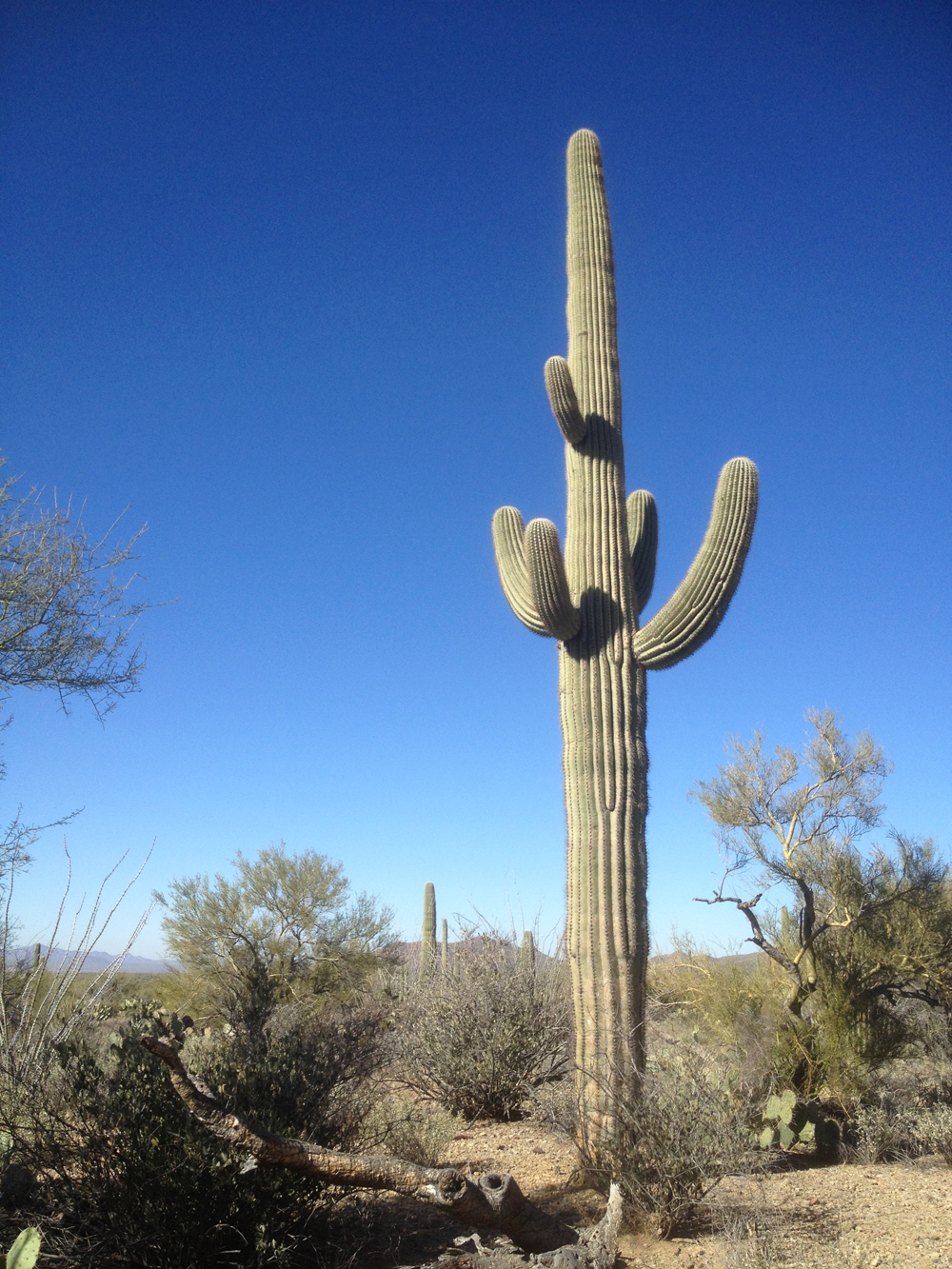I’m traveling with the book this week, giving talks and readings in Arizona. It’s been unusually cold here, and in Tucson I learned just how hard it is to warm up in a city not built for freezing weather. But the people couldn’t be warmer! It was my first visit to Tucson, and I fell in love with its vivid colors, its diversity, the funky shops, the big sky.
And of course the saguaros. I’d seen the giant cacti many times from a distance, but this time in saguaro country I got up close and personal. Driving out of Tucson, I took a detour through Saguaro National Park west of the city, past the Arizona-Sonora Desert Museum.
The temperature was warming, and a stiff breeze blew across the desert floor. At a turnout I hopped out of my car and followed a short path to the closest enormous saguaro.
Standing at its base, I stretched out my hand, carefully positioning two fingers between the close-set rows of spines, and touched the saguaro. It was swaying slightly in the wind, as trees do. I felt an enormous life-force, strong and old, standing firm.
But then I noticed something else—a whistling sound, a high-pitched “wheeeeeee” flowing above me, emanating from the saguaro. The sound of wind through thousands of spines. I’ve heard the rustle of cottonwood leaves, the whirring of wind in pines. But saguaros make a different sound. They whistle in the wind.
Time was short, so after only a few seconds of enjoying the whistling saguaro, I headed reluctantly back to my car. But I added an item to my bucket list: come back to Tucson in springtime—when I can stay a while and the saguaros are blooming.

